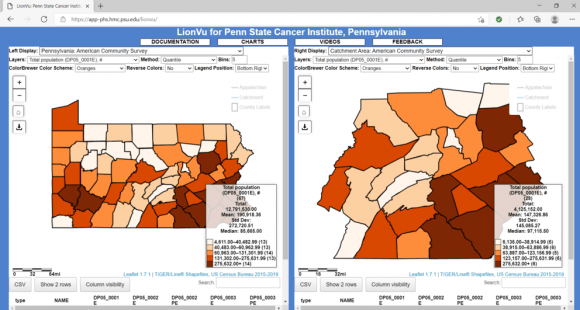IMAGE OF THE WEEK
 “Amid Rage” is geography alumnus Joel Burcat’s second novel, an environmental legal thriller about strip mining set in Pennsylvania. His main character is Mike Jacobs, assistant counsel with the Pennsylvania Department of Environmental Protection.
“Amid Rage” is geography alumnus Joel Burcat’s second novel, an environmental legal thriller about strip mining set in Pennsylvania. His main character is Mike Jacobs, assistant counsel with the Pennsylvania Department of Environmental Protection.
GOOD NEWS
Despite virtual THON, campaign challenges, EMS shatters fundraising goal. Dancers Chris Long and Talia Potochny are geography students.
March 23, 7 p.m., Schlow Library will virtually host Author Deirdre Mask to discuss her award-winning book, “The Address Book: What Street Addresses Reveal About Identity, Race, Wealth, and Power.” The Q&A will be moderated by Lorraine Dowler.
The College of Arts and Architecture’s Center for Pedagogy in Arts and Design will present a Women in Leadership Seminar featuring Hari M. Osofsky, dean of Penn State Law and the School of International Affairs, from 1-2 p.m. on Monday, March 29, via Zoom. The event is open to all Penn State faculty, staff and graduate students, and registration is required.
Researchers whose work addresses natural and cultural resource management topics can learn about partnering opportunities with federal agencies at the Cooperative Ecosystem Studies Units (CESU) Program Workshop. The workshop will take place from 2:30 to 4 p.m. on Tuesday, March 30, via Zoom. The event is free, and registration is required.
Penn State’s Institutes of Energy and the Environment, Office of Human Resources, Office of Educational Equity, Office of Diversity and Inclusion, and Sustainability Institute invite you to attend the annual Colloquium on the Environment this year featuring renowned scholar and activist Robert Bullard, considered the “father of the environmental justice movement.” Bullard will be delivering a keynote talk on “The Quest for Environmental and Climate Justice in the U.S.” The event is open to all, and registration is required.
Saumya Vaishnava received the Martin Graduate Assistant Outstanding Teaching Award.
COFFEE HOUR
No Coffee Hour this week, but more talks are scheduled for the semester.
- April 6, 10 a.m. EDT, Supraglacial Meltwater on the Greenland Ice Sheet, discussion with Laurence C. Smith
- April 9, Rivers of Power, The Miller Lecture with Laurence C. Smith (special time 11:30 a.m. EDT)
- April 23, Undergraduate Research Opportunities Connection (UROC) Showcase
If you missed any talks, you can view the recordings at our Coffee Hour channel.
NEWS
Penn State geography degree, law career are bedrock for alum’s thriller fiction
For Joel Burcat, retired environmental lawyer turned novelist, the first step on his career path was a physical geography course.
“I grew up in Philadelphia and attended Penn State without having declared a major,” Burcat said. “At the end of my sophomore year, I was required to declare a major. I was taking a class in physical geography with Professor Robert Larkin. He suggested that a degree in geography would be a good basis for a career in environmental law. That sounded interesting, something I’d enjoy doing and I decided to pursue it.”
THE CONVERSATION
Only a handful of US foundations quickly pitched in as the COVID-19 pandemic got underway, early data indicates
Emily Rosenman and Rachel Bok
Many U.S. foundations, which disbursed roughly US$76 billion in 2019, say they are giving more money away in the United States because of the COVID-19 pandemic and the health, economic and other crises it’s creating.
As geographers who study the connections between money and power, we’re tracking this trend. It’s hard, because foundations do not have to disclose many details about what they do or how they make decisions. Often, foundations share very little information with the public about which organizations they are supporting.
Penn State SWIG panel at AAG highlighted
The theme of this year’s Building Inclusive Communities and Diverse Departments, Supporting Women in Geography 8th Annual Panel is addressing “the challenges of inclusivity and diversity in departments and non-academic institutions [by] considering the cross-cutting aspects of race, gender, sexuality, indigeneity, disability, and other overlapping subjectivities.” Co-sponsored by Feminist Geographies Specialty Group, Queer and Trans Geographies Specialty Group, Black Geographies Specialty Group, Careers and Professional Development, and part of the Black Geographies Specialty Group curated track, the panel is organized by Penn State’s Supporting Women in Geography organization, a graduate student-run advocacy group which aims to support women and other underrepresented groups within the discipline of geography.
RECENTLY PUBLISHED
Tactile cartography in the digital age: A review and research agenda
Cole, H.
Progress in Human Geography
https://doi.org/10.1177/0309132521995877
Spatial media for people who are blind or visually impaired (B/VI) have evolved considerably in the years following Chris Perkins’ review of tactile map research, especially due to the proliferation of Internet access, mobile computing, and GPS technology. Reviewing intervening research, I identify prevailing themes in cartographic data management, media production, map design, and map use. I then propose a research agenda that identifies four high-priority topics for investigation: research conducted by people who are B/VI, maps created by people who are B/VI, low-tech tactile mapping, and social dynamics of tactile map use and production.
Landscape-Scale Forest Reorganization Following Insect Invasion and Harvest Under Future Climate Change Scenarios
Olson, S.K., Smithwick, E.A.H., Lucash, M.S. et al.
Ecosystems
https://doi.org/10.1007/s10021-021-00616-w
Emerald ash borer (EAB; Agrilus planipennis Farimaire) has been found in 35 US states and five Canadian provinces. This invasive beetle is causing widespread mortality to ash trees (Fraxinus spp.), which are an important timber product and ornamental tree, as well as a cultural resource for some Tribes. The damage will likely continue despite efforts to impede its spread. Further, widespread and rapid ash mortality as a result of EAB is expected to alter forest composition and structure, especially when coupled with the regional effects of climate change in post-ash forests. Thus, we forecasted the long-term effects of EAB-induced ash mortality and preemptive ash harvest (a forest management mitigation strategy) on forested land across a 2-million-hectare region in northern Wisconsin. We used a spatially explicit and spatially interactive forest simulation model, LANDIS-II, to estimate future species dominance and biodiversity assuming continued widespread ash mortality. We ran forest disturbance and succession simulations under historic climate conditions and three downscaled CMIP5 climate change projections representing the upper bound of expected changes in precipitation and temperature. Our results suggest that although ash loss from EAB or harvest resulted in altered biodiversity patterns in some stands, climate change will be the major driver of changes in biodiversity by the end of century, causing increases in the dominance of southern species and homogenization of species composition across the landscape.
Local Variation in Cannabis Use Patterns among Young Adults in the San Francisco Bay Area
Louisa M. Holmes, Johannes Thrul, Natalie K. Warren, Pamela M. Ling
Spatial and Spatio-temporal Epidemiology
https://doi.org/10.1016/j.sste.2021.100418
This study evaluated whether neighborhood-level disorder, social cohesion, and perceived safety, were associated with days of cannabis use in the prior month in a representative sample of young adults in Alameda and San Francisco Counties in California (N=1272). We used multiscale geographically weighted regression, modeled by county, to measure associations between cannabis use days and neighborhood attributes, adjusting for sociodemographic characteristics and self-rated health. Positive associations were found between number of cannabis use days and neighborhood disorder, and greater perceived safety. Higher levels of social cohesion predicted fewer cannabis use days. Racial/ethnic, sex and, socioeconomic compositions of participants residing in areas with significant neighborhood-level associations varied substantially, suggesting that risk factors for young adult cannabis use may be highly localized. Public health efforts in cannabis education and intervention should be tailored to fit the culture and composition of local neighborhoods.



